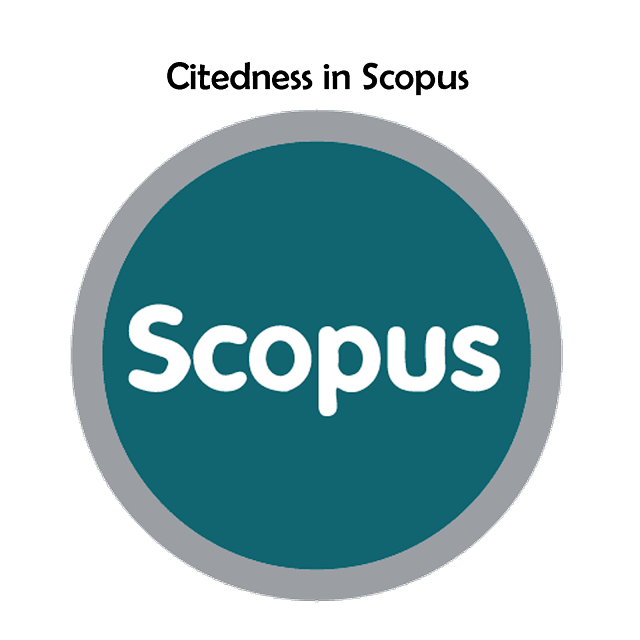FLIPPED CLASSROOM METHOD AND COLLABORATIVE WRITING VIA GOOGLE DOCUMENTS TO IMPROVE STUDENTS' PARTICIPATION AND WRITING PERFORMANCE IN HIGHER EDUCATION
DOI:
https://doi.org/10.37249/assalam.v7i2.668Keywords:
Flipped Classroom, Google Doc, Collaborative ClassroomAbstract
Flipped classrooms have been commonly used in educational settings after the pandemic. Schools provide a learning management system (LMS) to enhance the effectiveness of the learning process. Also, online platforms become popular among students, including online collaboration platforms like the Google document. The teaching method now could be more varied and flexible. This research focused on finding the impact of the flipped classroom method and collaborative writing through Google documents on students' active classroom participation and writing quality. The quasi-experimental study was designed to discover the significance of the impact in this case. Fifteen participants were given an IELTS writing pre-test and post-test at the beginning and the last meeting, and through the implementation of the method, the students were divided into five groups to write an essay collaboratively. The discussion and group work were applied during the classroom to observe active learning. The finding shows a significant impact on students' writing quality, especially the writing structure and coherence, and a positive impact on students' active learning concerning the students' initiative to contribute to the group work.
Downloads
References
Batubara, M. H., Herwanis, D., & Safitriana, S. (2021). An Analysis Of Student's Error In Writing Ability Through Descriptive Text Of Vii Grade Of SMP N 4 Takengon. Jurnal As-Salam,5(2), 110–119.
https://doi.org/10.37249/assalam.v5i2.276
Berdanier, C.G.P., & Lenart, J. B. (2021). So, you have to write a literature review. America: IEEE Press.
Boardman, A. (2002). Writing to communicate. New York: Longman.
Brown, H. D. (2001). Teaching by Principles: An Interactive Approach to Language Pedagogy (second edition). New York: Longman.
Bryman, A. (2016). Social Research Methods (5th ed.). Oxford: Oxford University Press.
Cao, L. T. T., & Swada, J. G. (2021). Effects of implementing flipped classroom elements and dynamic in-class discussion on student performance. Journal of Food Science Education, 20(1), 48–56.
https://doi.org/10.1111/1541-4329.12211
Chen, M. R. A., Hwang, G. J., & Chang, Y. Y. (2019). A reflective thinking-promoting approach to enhancing graduate students' flipped learning engagement, participation behaviors, reflective thinking, and project learning outcomes. British Journal of Educational Technology, 50(5), 2288–2307.
https://doi.org/10.1111/bjet.12823
Chen, W. (2021). Understanding students' motivation in L2 collaborative writing. ELT Journal, 75(4), 442–450.
https://doi.org/10.1093/elt/ccab027
Chuang, Y. (2018). The impact of collaborative writing on L2 writing development and L2 learning in the EFL college context. Doctoral dissertation. Fordham University. Proquest (10812895)
Cresswell, J. W. (2009). Research Design: Qualitative, quantitative and mixed methods approaches (3rd ed.). America: Sage Publications.
Ekayati, R., & Rahayu, Y. S. (2019). Building up students' motivation in learning English through a fun English learning strategy (FELS). The 1st Multi-Disciplinary International Conference University Of Asahan 2019, 967-981. https://core.ac.uk/outputs/268618799
Fathi, J., Rahimi, M., & Liu, G. Z. (2022). A preliminary study on flipping an English as a foreign language collaborative writing course with video clips: Its impact on writing skills and writing motivation. Journal of Computer Assisted Learning, 39(2), 1-17.
https://doi.org/10.1111/jcal.12772
Flower, L., & Hayes, J. R. (1981). A cognitive process theory of writing. College Composition and Communication, 32(4), 365–387.
https://doi.org/10.2307/356600
Fredrickson, J. (2015). Online learning and student engagement: Assessing the impact of a collaborative writing requirement. In Academy of Educational Leadership Journal, 19(3), 127-140.
https://www.proquest.com/openview/8349c82e5967c45573954604102b7483/1?pq-origsite=gscholar&cbl=38741
Harmer, J. (2004). How to teach writing. Essex, UK: Pearson Education.
Huang, J. (2022). Relationships between EFL learners' background, motivational, instructional, ICT-related characteristics, and writing performance: Evidence from 13 educational systems. Psychology in the Schools, 59(3), 495–514.
https://doi.org/10.1002/pits.22626
Jensen, B. A. (2019). Using Flipped Learning to Facilitate Cross-Cultural Critical Thinking in the L2 Classroom. Die Unterrichtspraxis/Teaching German, 52(1), 50–68.
https://doi.org/10.1111/tger.12084
King A. (1993). From sage on the stage to guide on the side. College Teaching, 41(1).
Kurihara, N. (2017). Do Peer Reviews Help Improve Student Writing Abilities in an EFL High School Classroom? TESOL Journal, 8(2), 450–470.
https://doi.org/10.1002/tesj.282
Megawati, & Rahmawati, N. K. (2019). Meningkatkan Kemampuan Menulis Bahasa Inggris dengan Teknik Mind Mapping Pada Mahasiswa STKIP Kusumanegara Jakarta. JIP STKIP Kusuma Negara, 11(1), 21-36.
https://jurnal.stkipkusumanegara.ac.id/index.php/jip/article/view/86
Naing, C., Chellappan, D. K., Shew Fung, W., Riegelman, A., & Whittaker, M. A. (2019). Protocol: The effects of flipped classrooms to improve learning outcomes in undergraduate health professional education: A systematic review. Campbell Systematic Reviews, 15(3), 1-14.
https://doi.org/10.1002/cl2.1041
Nasution, D. S., Batubara, M. H., & Rahmayana, R. (2021). Increasing Students' Ability In Writing Procedure Text Through Learning Model Pictures And Pictures. Journal of Linguistics, Literature, and Language Teaching (JLLLT), 1(1), 8–19.
https://doi.org/10.37249/jlllt.v1i1.302
Nissa, K., & Hidayah, J. P. (2021). Peran Guru dan strategi dalam meningkatkan partisipasi siswa. Jurnal Guru Kita, 5(4), 51-58.
https://doi.org/10.24114/jgk.v5i4.27984
Nunan, D. (2003). Practical English language teaching. Singapore: McGraw Hill.
Octaviani, A., & Ginting, P. (2023). Applying Flipped Classroom Model Using Duolingo Application to Enhance Thammislam Foundation School's Student Learning EFL. Indonesian Journal of Education & Mathematical Science, 4(3), 116–121.
https://doi.org/10.30596/ijems.v4i3.15822
Sargent, J., & Casey, A. (2020). Flipped learning, pedagogy, and digital technology: Establishing consistent practice to optimize lesson time. European Physical Education Review, 26(1), 70–84.
https://doi.org/10.1177/1356336X19826603
Weigle, S. C. (2011). Validation of automated scores of TOEFL IBT ® Tasks against nontest indicators of writing ability. ETS Research Report Series, 2011(2), i–63.
https://doi.org/10.1002/j.2333-8504.2011.tb02260.x
Wyatt-Smith, C., & Castleton, G. (2004). Factors affecting writing achievement: Mapping teacher beliefs. English in Education, 38(1), 39–63.
Downloads
Published
How to Cite
Issue
Section
License
Copyright (c) 2023 Khairun Nissa, Pirman Ginting, Resty Wahyuni

This work is licensed under a Creative Commons Attribution-ShareAlike 4.0 International License.










.png)




